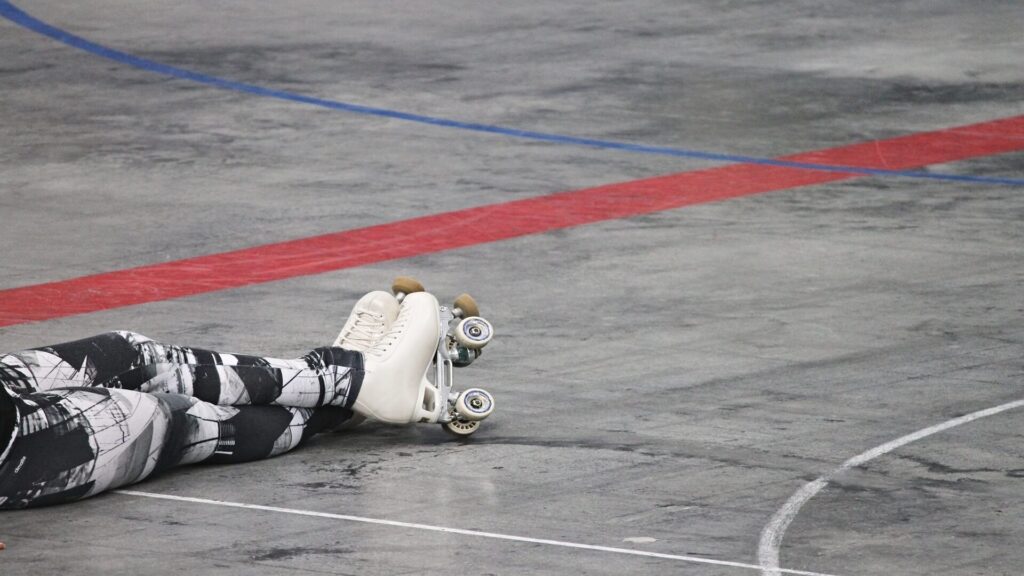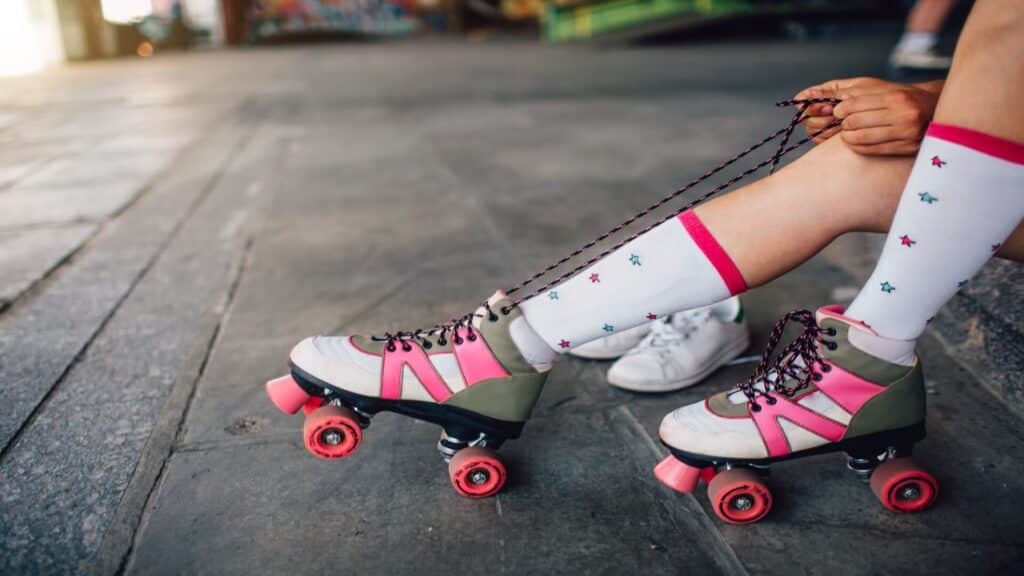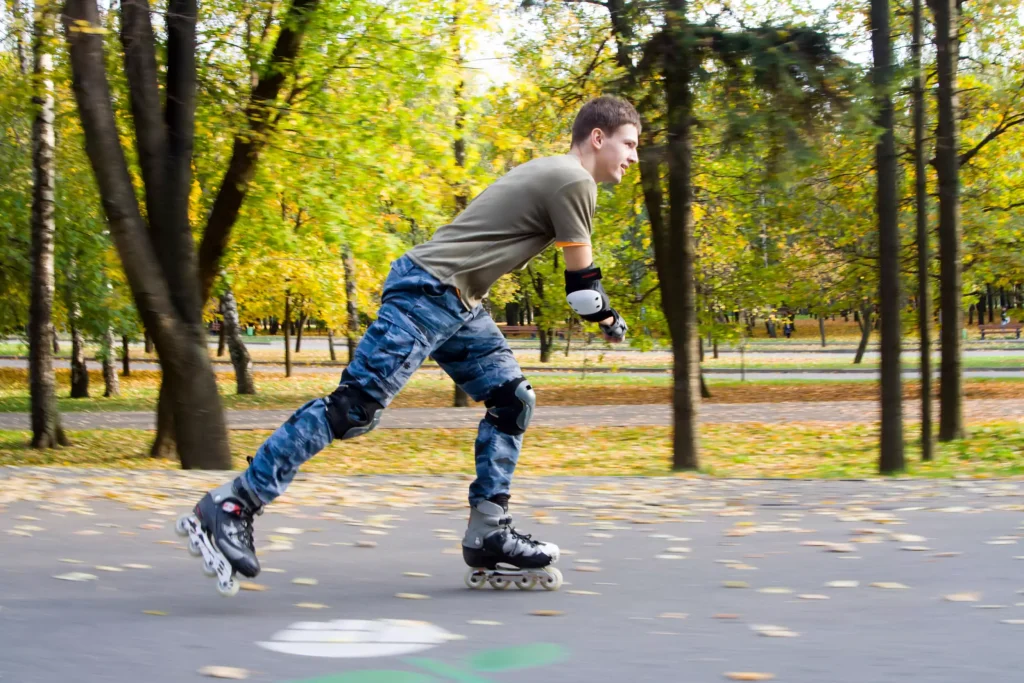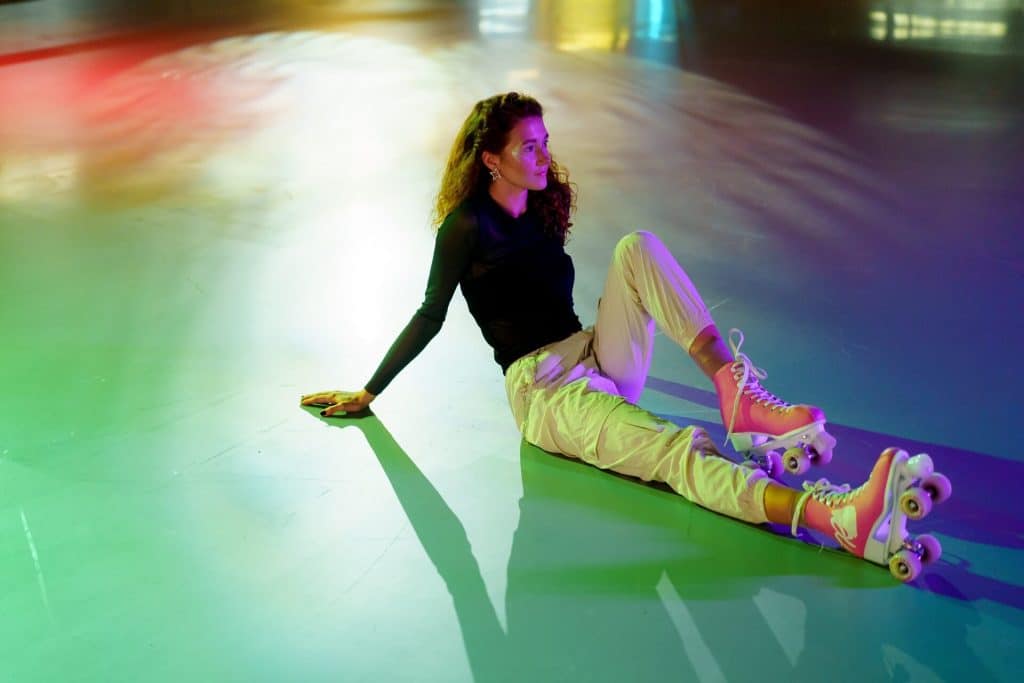Roller and ice skating are popular recreational activities that people of all ages enjoy. At first glance, these activities may seem quite similar, as they both involve gliding across a surface on wheeled or bladed footwear.
But is roller skating like ice skating? This article will explore the similarities and differences between the two sports, examining their history, equipment, techniques, and benefits.
Table of Contents
- Is Ice Skating Harder than Roller Skating?
- History of Roller Skating and Ice Skating
- Getting Started: Tips for Beginner Skaters
- Equipment: Wheels vs. Blades
- Techniques: Mastering the Glide
- Benefits: Exercise and Fun
- Accessibility and Locations
- Skill Levels and Learning Curve
- Competitive Skating and Notable Athletes
- Skating for Fitness: Calorie Burn and Muscle Building
- Conclusion
- Frequently Asked Questions
Is Ice Skating Harder than Roller Skating?
When evaluating the challenging aspects of each activity, many perceive ice skating as the more difficult skill to master – especially early on.
Factors that can make ice skating trickier initially include:
- Slippery Ice Surface: Gliding atop a sheer ice surface provides less natural traction and friction for gaining balance compared to wheeling across a rink floor or pavement. This makes novice ice skaters more prone to slips and falls.
- Blade Thinness: Ice skate blades are thinner than roller skate wheels, requiring more ankle strength, control, and precision when balancing. The lack of a flat surface area makes stability harder on ice.
- Cold Temperatures: Frigid ice rinks can numb feet, tighten muscles, and distract focus. Discomfort from the cold directs attention away from skill development.
However, ice’s added challenge also brings a greater sense of reward once skills progress. While roller skating basics come quicker, mastering advanced ice techniques provides a feeling of conquering a greater learning curve. The slipperiness of ice allows seasoned skaters to carve deeper, more dramatic arcs and build momentum for jumps and spins not as easily replicated on wheeled skates.
History of Roller Skating and Ice Skating
Roller Skating: The Invention of Wheeled Skates
Roller skating dates back to the 18th century when John Joseph Merlin, a Belgian inventor, designed the first inline roller skating. The skate featured a single line of wheels and wasn’t very maneuverable.
However, in 1863, James Leonard Plimpton revolutionized the design by introducing quad roller skates with two pairs of wheels, allowing skaters to easily change direction by shifting their weight.
If you wish to learn more about the history of roller skates, you should read this article.
Ice Skating: An Ancient Winter Pastime
Ice skating has a much longer history, with evidence of the sport dating back over 3,000 years to ancient Finland. Originally, skates were made from animal bones and were used for transportation across frozen waterways. Modern ice skates with metal blades were developed in the 13th century, making it easier for skaters to glide across the ice.
Getting Started: Tips for Beginner Skaters
For those looking to give skating a try, here is some beginner advice on choosing equipment and learning the basics:
Roller Skating
Roller skates come in a variety of styles catered to different skating interests. For recreational skating, start with comfortable, supportive quad skates with plenty of ankle padding. Look for wheels suited to the surfaces you’ll skate on (indoor wheels are not suited for asphalt).
Protective gear like helmets, kneepads, and wrist guards are strongly recommended while you find your balance. Consider taking a beginner group lesson at your local skating rink to learn how to stride, stop, and fall safely. Mastering these basic skills will build confidence.
Ice Skating
Figure skates allow for more flexibility but provide less support than their hockey counterparts. Begin with properly fitted, entry-level skates with plenty of lace support. Wear thin socks, and have an expert properly sharpen your blades.
Sign up for learn-to-skate lessons at your local rink to get accustomed to being on the ice. Learn how to fall on your knees to avoid injury. Stick to rink perimeter walls at first, use skating aids if needed, and work up slowly from tentative gliding to confident strides.
Equipment: Wheels vs. Blades
Roller Skates
Roller skates come in two main types – inline skates and quad skates. Inline skates feature a single line of wheels, while quad skates have two pairs of wheels.
The boots of roller skates are typically made from leather or synthetic materials, and skates are designed for either indoor or outdoor use, with wheels made from materials like urethane.
Ice Skates
Ice skates feature a boot and a metal blade attached to the bottom. The blades are sharpened to create edges that bite into the ice, allowing the skater to glide, turn, and stop. Ice skate boots are made from materials like leather or synthetic leather, and they’re designed to provide ankle support and a snug fit.
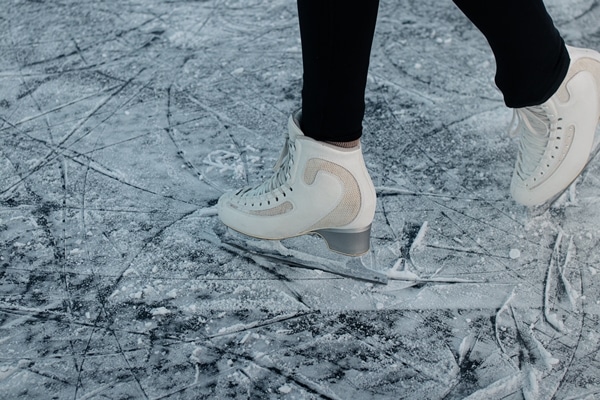
Techniques: Mastering the Glide
While there are some similarities in the techniques used for both roller and ice skating, there are also notable differences due to the surface and equipment.
Balancing and Posture:
Maintaining balance and proper posture are essential in both roller and ice skating. Skaters need to bend their knees slightly and lean forward to maintain their center of gravity, keeping their heads up and arms out to the sides for balance.
Gliding and Stopping
When it comes to gliding, is roller skating like ice skating? The basic principles are the same, but the execution differs due to the friction between wheels or blades and the surface. Skaters push off with one foot and glide on the other in roller skating.
To stop, they can use a toe stop or perform a T-stop or plow stop. In ice skating, gliding is achieved by pushing off with the inside edge of one skate while the other glides on the ice. Stopping is typically done using a “snowplow stop” or a “hockey stop.”
Turning
Turning techniques also differ between the two sports. In roller skating, skaters shift their weight and lean into the turn, using their edges to control the direction. In ice skating, skaters use their edges more precisely, relying on the inside and outside edges of the skate blades to perform various turns and maneuvers.
Benefits: Exercise and Fun
Both roller and ice skating are excellent forms of exercise that help improve balance, coordination, and endurance. Skating strengthens the muscles in the legs, hips, and core while providing a low-impact cardiovascular workout.
Additionally, both activities are enjoyable and social, making them appealing options for people seeking a fun and engaging way to stay active.
Accessibility and Locations
Roller Skating
One advantage of roller skating is that it can be done in various environments, such as indoor rinks, outdoor parks, and even on streets and sidewalks. This flexibility makes roller skating a more accessible sport for those who do not live near an ice rink or in colder climates.
Ice Skating
Ice skating typically requires a specialized venue, such as an indoor or outdoor ice rink. Outdoor rinks are usually seasonal and dependent on colder weather conditions, while indoor rinks may be available year-round. The need for a specific location and surface can make ice skating less accessible for some people.
Skill Levels and Learning Curve
When considering the question, “Is roller skating like ice skating?” it is essential to consider the learning curve and skill levels required for each activity. Both sports offer beginner-friendly options, and people can learn the basics relatively quickly.
Roller Skating
Roller skating generally has a more gentle learning curve, as the wider and flatter surface of the wheels provides more stability and balance for beginners. Additionally, quad roller skates are particularly beginner-friendly, as their four wheels provide a wider base for support.
Ice Skating
Ice skating can be more challenging for beginners due to the narrow blades and the slippery surface of the ice. However, with practice and patience, most people can learn to ice skate and become comfortable with the unique sensation of gliding on ice.
Competitive Skating and Notable Athletes
In addition to recreation, both roller and ice skating have competitive scenes that have showcased incredible talent, skills, and athleticism.
Ice Skating: From the Rink to the Podium
Figure skating is perhaps the most renowned competitive ice skating format. Notable Olympic figure ice skaters like Michelle Kwan, Kristi Yamaguchi, Scott Hamilton, and Yuzuru Hanyu have wowed audiences with their artistry, jumps, spins, and footwork sequences choreographed to music.
In speed skating, legends Eric Heiden and Bonnie Blair set Olympic records with their blazing-fast lap speeds. Ice hockey greats like Wayne Gretzky, Bobby Orr, and Hayley Wickenheiser became household names for their puck-handling mastery, skating agility, and goal-scoring feats.
Roller Skating: Pushing Limits on Wheels
In competitive roller skating, the rise of rollerblading or aggressive inline skating in the X Games spotlighted death-defying aerials and rail grinds. Big names like Chris Haffey, Brian Shima, and Jon Julio invented gravity-defying tricks.
In roller derby, co-ed teams compete to score points by racing counterclockwise and passing members of the opposing team. Top teams like the Victorian Roller Derby League and Texas Rollergirls popularized roller derby competitions with their skilled jammers, blockers, and pivots.
Skating for Fitness: Calorie Burn and Muscle Building
In addition to being fun activities, both roller and ice skating provide excellent workouts that engage major muscle groups and rev up your heart rate.
Roller Skating: Low-Impact Cardio
Gliding on Wheels provides a quality aerobic workout that burns calories without a heavy impact on joints. A 155-pound person can expect to burn around 515 calories per hour of recreational roller skating. The quad skating motion works inner thighs, glutes, core, and calves in particular. Up-tempo skating interspersed with faster sprints or backward skating increases the fitness benefits.
Ice Skating: Full-Body & Cardio
Ice skating recruits key muscle groups throughout the body to maintain balance, control edges, and propel yourself across the ice. A 155-pound person may burn 330 calories per hour of casual skating, or up to 500+ calories when skating vigorously. Core strength and leg power are vital to jumps and spins. Ankles and knees need muscle control. The upper body, back, and abdominals get a workout with proper form.
Conclusion
So, is roller skating like ice skating? While both sports share similarities in techniques and benefits, they also have unique features and characteristics that set them apart. Roller skating is more accessible and may be easier for beginners, while ice skating offers a more specialized experience on a slippery surface.
Both sports provide excellent opportunities for exercise, enjoyment, and socialization. Ultimately, the choice between roller skating and ice skating may come down to personal preference, location, and accessibility.
Frequently Asked Questions
Question: Are roller skating and ice skating similar activities?
Answer: While roller skating and ice skating share some similarities in terms of techniques and benefits, there are distinct differences in equipment, surfaces, and the learning curve involved in each sport.
Question: Which type of skating is easier for beginners?
Answer: Roller skating, particularly on quad roller skates, is generally easier for beginners due to the wider and flatter surface of the wheels providing more stability and balance.
Question: Are the techniques for roller skating and ice skating the same?
Answer: While both sports share some similarities in techniques, such as balancing and posture, there are notable differences in gliding, stopping, and turning techniques due to the distinct equipment and surface properties.
Question: Are there health benefits associated with roller skating and ice skating?
Answer: Yes, both roller skating and ice skating are excellent forms of exercise that help improve balance, coordination, and endurance. Skating strengthens the legs, hips, and core muscles while providing a low-impact cardiovascular workout.






